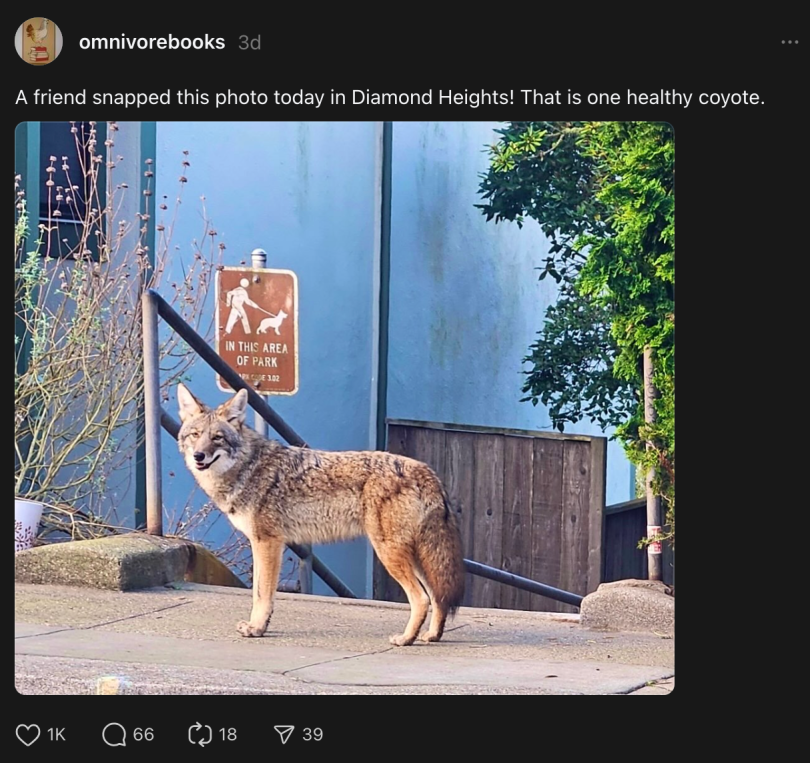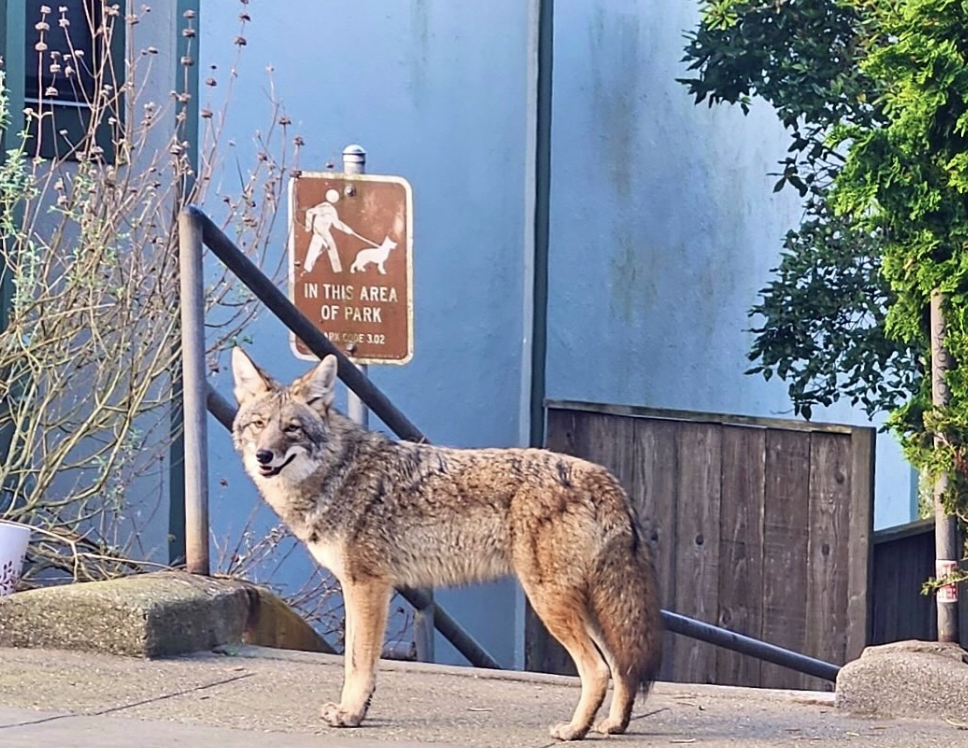 Dozens of coyotes criss-cross San Francisco on a daily basis, but their shy nature makes seeing them almost motionless in broad daylight a rare treat.
Dozens of coyotes criss-cross San Francisco on a daily basis, but their shy nature makes seeing them almost motionless in broad daylight a rare treat.
San Francisco’s coyote population is famous for its run-ins with humans — and their dogs. It’s estimated that around 100 coyotes call SF home, but the figure is years-old and likely represents an undercounted population; coyote sightings and incidents have increased exponentially since 2020, with 2024 having recorded more sightings than 2022 and 2023 combined.

The small canines occupy wild and re-wilded territories around the city, using especially isolated and protected areas to erect pupping dens; both parents take it upon themselves to raise the born pups from March to September until they’re old enough to fend (mostly) for themselves; coyotes, while considered solitary animals, are known to exist in small packs — some of which have familial relation.
For San Franciscans, autumn means there’s less of a chance to encounter one of these 30-lb predators out and about the city. But that doesn’t mean they’ve migrated elsewhere; they’ve simply grown more timorous and less outwardly visible with no need to feed extra mouths.
Outside of designated dog parks, San Francisco dogs should always be leashed … for their own protection. A recent picture uploaded to Threads sits as visual evidence of just that … featuring a large coyote in SF’s Diamond Heights neighborhood stopped in front of a sign advising dog owners to leash their pet.
“A friend snapped this photo today in Diamond Heights,” Ominovre Books, the popular SF independent bookstore that specializes in culturally-bent literature, posted on Threads, later noting the animal’s large size. “That’s one healthy coyote!”
Urban coyotes tend to be larger than their more wild counterparts, presumably because of an abundance of resources and more available shelter. However, regional location has much more influence on coyote size; all coyotes, which are also known as American jackals, belong to the same species, Canis latrans, but those East of the Rocky Mountains can regularly weigh twice as much as animals found along the West Coast.
No matter a coyote’s size, these animals can inflict life-changing injuries on a person when provoked. For our fur-legged friends, they can fall prey to these urban creatures quite easily. But just like us bipeds, these quadrupeds are doing what they need to survive in an increasingly hostile world.
Not if, but when you do see a coyote prancing around a San Francisco greenspace, give it space. Don’t approach it for social media fodder. And if your pet isn’t leashed, holster your fur-baby ASAP.
Related

